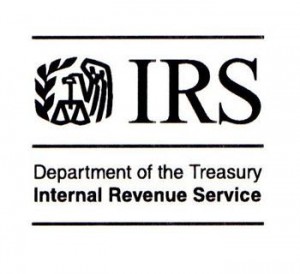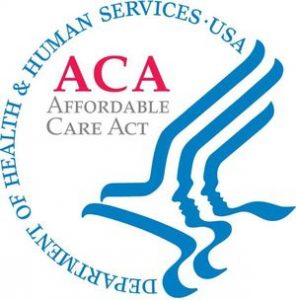 A new article by Carol V. Calhoun, published by Lexis Practice Advisor, provides sample subrogation and reimbursement clauses to be used in a summary plan description. Such clauses are typically used in an instance in which an employer’s health or disability plan wants to avoid a situation in which a participant gets a double recovery for the same illness or injury. For example, an employee covered by both the employer’s health plan and a spouse’s health plan should not have the same medical expenses paid by both plans. Or an individual who is hit by a car, and recovers lost wages from the driver’s insurance company, should not also be able to receive disability benefits for the same period.
A new article by Carol V. Calhoun, published by Lexis Practice Advisor, provides sample subrogation and reimbursement clauses to be used in a summary plan description. Such clauses are typically used in an instance in which an employer’s health or disability plan wants to avoid a situation in which a participant gets a double recovery for the same illness or injury. For example, an employee covered by both the employer’s health plan and a spouse’s health plan should not have the same medical expenses paid by both plans. Or an individual who is hit by a car, and recovers lost wages from the driver’s insurance company, should not also be able to receive disability benefits for the same period.
Sample Subrogation and Reimbursement Clauses for Summary Plan Description Now Available
Carol V. Calhoun quoted in “Will the Nick Sabin tax apply to Nick Sabin?”
(Posted on March 26, 2018 by Carol V. Calhoun)
Carol V. Calhoun was quoted in a March 12, 2018 article in Tax Notes, dealing with the issue of whether the new excise taxes on excess compensation and excess severance benefits will apply to public colleges and universities. The wording of the law makes it unclear whether the law should apply to the very governmental entities most likely to have employees that would otherwise be affected by it.
“Effect of the Tax Cuts and Jobs Act of 2017 on Nonprofits and Governments,” PowerPoint now available
(Posted on February 15, 2018 by Carol V. Calhoun)
 The Tax Cuts and Jobs Act of 2017 made a number of changes affecting the compensation and benefits that governmental, church, and other tax-exempt organizations can provide to their employees. Given the short time between introduction and passage of the Act, it is not surprising that many of the new provisions are unclear in their application. Moreover, some of them may produce unintended consequences for these organizations.
The Tax Cuts and Jobs Act of 2017 made a number of changes affecting the compensation and benefits that governmental, church, and other tax-exempt organizations can provide to their employees. Given the short time between introduction and passage of the Act, it is not surprising that many of the new provisions are unclear in their application. Moreover, some of them may produce unintended consequences for these organizations.
As part of a symposium on “Recent Developments in Benefits/Executive Compensation Affecting Tax Exempt Organizations,” Carol V. Calhoun gave a presentation on the ways in which the Tax Cuts and Jobs Act of 2017 will affect the compensation and benefits of such organizations. A copy of the PowerPoint for her speech can be found at this link.
“Overview of the Tax Cuts and Jobs Act: What Individuals and Business Owners Need to Know,” PowerPoint now available
(Posted on February 1, 2018 by Carol V. Calhoun)
 The PowerPoint slides for the presentation entitled “Overview of the Tax Cuts and Jobs Act: What Individuals and Business Owners Need to Know,” given at the offices of Venable LLP on February 1, 2018, are now available at this link.
The PowerPoint slides for the presentation entitled “Overview of the Tax Cuts and Jobs Act: What Individuals and Business Owners Need to Know,” given at the offices of Venable LLP on February 1, 2018, are now available at this link.
Nonprofits and Governments Face Compensation and Benefits Issues under the New Tax Law
(Posted on January 11, 2018 by Carol V. Calhoun)
 The recently passed tax bill imposes a 21% excise tax on excess compensation and excess severance benefits of certain executives of nonprofit and governmental employers. The provision has a substantial impact on the compensation and benefits that such organizations can provide for their executives. Moreover, the determination of which employers, and which executives, are covered includes several traps for the unwary.
The recently passed tax bill imposes a 21% excise tax on excess compensation and excess severance benefits of certain executives of nonprofit and governmental employers. The provision has a substantial impact on the compensation and benefits that such organizations can provide for their executives. Moreover, the determination of which employers, and which executives, are covered includes several traps for the unwary.
Navigating Pension and Annuity Payments: General Rule and Taxation Guidelines
(Posted on December 18, 2017 by Carol V. Calhoun)
 A 76-page PowerPoint presentation from a live Lorman Telecom webinar, “Navigating Pension and Annuity Payments: General Rule and Taxation Guidelines,” is now available by clicking here.
A 76-page PowerPoint presentation from a live Lorman Telecom webinar, “Navigating Pension and Annuity Payments: General Rule and Taxation Guidelines,” is now available by clicking here.
The webinar covered distributions from qualified plans (pension, profit sharing, stock bonus, and 401(k), including Roth accounts), IRAs (regular and Roth), and commercial annuities. Topics covered:
- Sources of distributions (employer contributions, employee deferrals, Roths, after-tax contributions, and rollovers);
- Restrictions on how early and how late distributions can be taken;
- Penalties on early withdrawals;
- Taxation of lump sum distributions;
- Taxation of withdrawals and partial distributions;
- Taxation of annuities and other periodic payments;
- Plan withholding and reporting; and
- Participant reporting.
IRS Issues Self-Assessment Forms for Federal, State, and Local Government Employers
(Posted on July 10, 2017 by Carol V. Calhoun)
 The IRS has now issued a series of forms to enable federal, state, and local governments to assess their compliance with federal tax statutes, and has set forth some common errors found in examining such employers. Several of the forms relate to employee benefits issues, and may be of assistance to governments trying to ensure that they comply with all legal requirements.
The IRS has now issued a series of forms to enable federal, state, and local governments to assess their compliance with federal tax statutes, and has set forth some common errors found in examining such employers. Several of the forms relate to employee benefits issues, and may be of assistance to governments trying to ensure that they comply with all legal requirements.
The forms are as follows:
For use by Federal, State and Local Government Entities
- Form 14581-A Fringe Benefits Compliance Self-Assessment
- Form 14581-B International Issues Compliance Self-Assessment
- Form 14581-D Other Tax Issues Compliance Self-Assessment
- Form 14581-G Worker Status Compliance Self-Assessment
For use by State and Local Government Entities Only
Employers Need to Adopt Pre-Approved 403(b) Plans by March 31, 2020
(Posted on January 30, 2017 by Carol V. Calhoun)
 With the IRS no longer issuing rulings or determination letters on individually designed qualified plans or
With the IRS no longer issuing rulings or determination letters on individually designed qualified plans or
Reflecting this, Revenue Procedure 2013-22 established a program for issuing opinion and advisory letters for
The IRS has now announced in Rev. Proc. 2017-18, 2017-5 I.R.B. 743, that the last day of the remedial amendment period for employers to adopt pre-approved
Obtaining an IRS advisory or opinion letter is not legally required, so long as a plan (in form and operation) complies with
What’s Happening with the Affordable Care Act?
(Posted on January 25, 2017 by Carol V. Calhoun)
 The recent flurry of activity around the Affordable Care Act (ACA) has many people confused about where it stands, and what the employer’s obligations are. The following summarizes the activity so far:
The recent flurry of activity around the Affordable Care Act (ACA) has many people confused about where it stands, and what the employer’s obligations are. The following summarizes the activity so far:
Legislative Repeal Activity
A popular meme suggests that the Senate voted to eliminate virtually all of the provisions of the ACA, including the ability to obtain insurance in spite of pre-existing conditions, the requirement to cover adult children up to the age of 26, etc. This is not the case.
Department of Labor Regulations Permit State and Local Governments to Set Up Retirement Plans for Private Employers
(Posted on December 20, 2016 by Carol V. Calhoun)
 In recent years, several states have adopted laws requiring private (nongovernmental) employers to set up payroll deduction individual retirement accounts, individual retirement annuities, or Roth IRAs (collectively, IRAs) for their employees. Certain localities have also indicated an interest in setting up such programs. ERISA by its terms generally preempts any and all state laws relating to any employee benefit plan regulated by ERISA, other than state laws that regulate insurance, banking, or securities. ERISA
In recent years, several states have adopted laws requiring private (nongovernmental) employers to set up payroll deduction individual retirement accounts, individual retirement annuities, or Roth IRAs (collectively, IRAs) for their employees. Certain localities have also indicated an interest in setting up such programs. ERISA by its terms generally preempts any and all state laws relating to any employee benefit plan regulated by ERISA, other than state laws that regulate insurance, banking, or securities. ERISA
- Are the state or local laws setting up such programs preempted by ERISA?
- Aare the plans themselves subject to ERISA?
The Department of Labor issued final regulations on August 30, 2016 providing a safe harbor for statewide plans covering private employers. On December 20, 2016, it expanded on those regulations with further regulations providing a safe harbor for plans for private employers operated by local governments. This bulletin discusses how those programs work, and what employers can expect from them.
